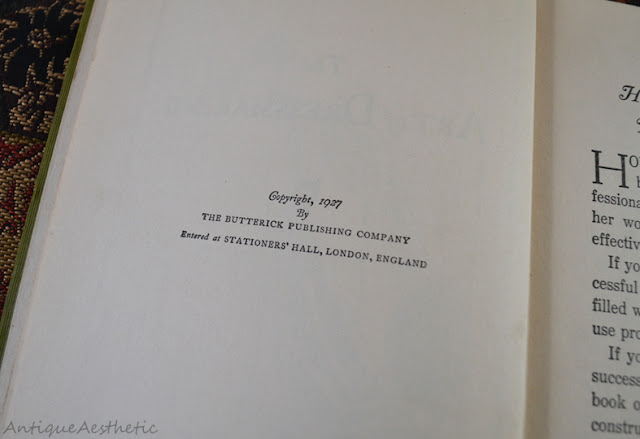While venturing down the rabbit hole of Etsy I happened upon a circa 1923 Butterick pattern, in my size, for a steal, and I couldn't pass it up. The pattern is for an open front over-dress closed with a belt, with a slip underneath, a common style of the period.
The pattern - I don't believe it has ever been used except for the slip, which would explain its disappearance.
The pattern, as was expected, was missing the two pieces for the slip. Luckily for me, I have a reproduction 1930s bodice pattern that is surprisingly similar to the top of the slip, so I figured I could, with some tweaking, make my own version of the slip pattern and be able to construct the dress almost as if nothing was missing.
To make this experience as authentic to the 1920s as possible, I also used Art of Dressmaking by Butterick from 1927 to assist me in techniques from the era, and used this book exclusively to answer any questions about construction I might have had.
Art of Dressmaking, Butterick, 1927.
And finally, since summer is here, I decided on making a lightweight white dress based on this image I found on Pinterest:
Of course this isn't the same style, but I loved the white dress with black and red detailing and wanted to emulate those details on my dress.
(This is part one of three documenting my journey into making this dress. Check back next time for the construction!)




































